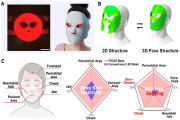Chinese smartphone manufacturer Xiaomi is on Samsung Display’s OLED display waiting list that is running well into 2017, reported Korean media etnews.
High Samsung’s OLED displays demands has triggered a supply shortage, caused by soaring OLED demands in affordable smartphone models including Xiaomi, Vivo, and Oppo. Oppo was targeting OLED smartphone shipment volume of 60 million phones by 2016, but quickly raised its estimates from 90 million to 100 million phones, initiating a competition to grab OLED displays.
Smartphone hardware is becoming increasingly similar, vendors in the industry are differentiating their products with OLED displays. OLED displays are gradually trickling downstream from flagship smartphones to mid-range phones, making OLED displays increasingly popular. In 2014, only 21 smartphones excluding Samsung phones used OLED panels, according to IHS. The figure more than doubled in 2015, when 50 smartphones started using OLED displays. Research institutes estimate the trend will enter an explosive growth phase in 2016, as Chinese smartphone manufacturers Oppo, Vivo, Huawei, Meizu, Xiaomi, Konka and Micromax all joined the OLED smartphone bandwagon.
Despite its heavy investments in expanding OLED production, Samsung Display is mostly keeping its production capacity for Apple’s next generation iPhones, making it difficult to improve the supply shortage in the short term. According to understanding, Samsung Display’s A2 AMOLED fab has manufactured 5.5 generation hard OLEDs, and has a monthly production capacity of 1.5 million panels. The A3 AMOLED fab is making flexible sixth generation OLEDs, and has a monthly production capacity of 15,000 displays. The industry estimates, Samsung’s latest investments will increase production capacity at its A2 fab and A3 fab respectively by 20,000 and 30,000 panels.
Samsung Display will continue to invest in its OLED technology and renovate its L7-1 LCD fab into an OLED production fab, after Samsung completes its investments its flexible OLED production capacity can be raised by 180,000 panels per month.
Taiwanese OLED concept companies include AOTA, Innolux, TPK, GIS and others.
Samsung Display’s smartphone OLED panel shipment volume soared 81.5% during second quarter to reach 98.38 million panels in 2016, setting a new record high. The company has completely monopolized the smartphone OLED display industry with a market share of 99%.
Emerging Chinese manufacturer BOE squeezed out Japanese vendors to become the world’s second largest vendor, while ranking in third is Japan Display Inc. (JDI). In fourth place is Chinese company Tianma, and LG Display global rankings tumbled from top three to five.
Samusng intends to shut down its seventh generation LCD display production line L7-1 by late 2016, reported Korean media Hankyung. The L7-1 display production capacity makes up about 15% of the company’s LCD production, and about 3% of global LCD production. Europe based financial institutes also announced Samsung is in the process of closing its L7-1 production line.





 CN
TW
EN
CN
TW
EN





